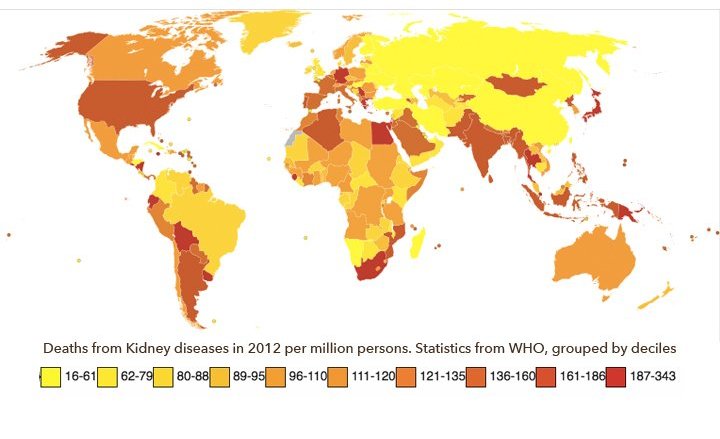
Nephrotic syndrome is one of the most common kidney disorders, characterised by excessive protein in the urine, swelling in the legs, feet and ankles, and increased levels of albumin and lipids in the blood of patients. It has a high level of incidence in Asian countries, particularly amongst children (9−16 per 100000 children every year). Now, in a massive international collaborative effort, researchers from India, Germany, the United States, Saudi Arabia, Egypt, Japan, Serbia, Switzerland, Austria, Kazakhstan and Canada have identified variants in six novel genes which may be responsible for causing this disorder.
Inside the kidney, glomeruli are networks of capillaries that filter blood. In patients of nephrotic syndrome, damage to the glomeruli lets proteins and red blood cells leak into the urine. The conventional treatment regimen consists of administration of steroids, which have limited effectiveness. Based on whether or not patients respond to steroid treatment, the disorder is classified as Steroid Sensitive Nephrotic Syndrome (SSNS) and Steroid Resistant Nephrotic Syndrome (SRNS).
Previous studies have found mutations in more than 40 genes to be associated with steroid-resistant nephrotic syndrome. These studies also suggest that many of these gene products localize to podocytes, cells in the kidney that help flush out toxins from the blood. However, only one gene has till date been shown to monogenetically cause steroid-sensitive nephrotic syndrome, and the mechanism of steroid resistance remains a mystery.
In this new study, researchers analysed multiple families with nephrotic syndrome and identified mutations in six novel genes (MAGI2, CDK20, TNS2, DLC1, ITSN1 and ITSN2) as causative factors in 17 families with partially treatment-sensitive nephrotic syndrome (which falls somewhere in the border between steroid-resistant and steroid-sensitive variants of the disease).
To understand the role these genes play in the pathophysiology of the nephrotic syndrome, the researchers evaluated the effect of overexpression and knockdown of all six genes in cell lines. They observed that the proteins encoded by these genes interact to regulate the activity of Rho like small GTPases — a class of proteins that has previously been implicated in the pathogenesis of nephrotic syndrome. The mutant variants of these genes found in the partially treatment-sensitive patients, however, lacked this effect.
Interestingly, steroid treatment abolished the effect of two of these genes (DLC1 and CDK20) on Rho like small GTPases in cell lines as well as in cultured human podocytes. This suggests that regulation of this activity may be a possible mechanism for beneficial steroid action.
“This study provides insight into the possible molecular basis of nephrotic syndrome as well as opens doors to explore newer therapeutics targeting Rho signaling activity,” says Dr Anil Vasudevan, Head of Pediatric nephrology at the St. Johns medical college hospital, Bangalore. “The weak correlations between genotype and phenotype exhibited in this study also reinforce the emerging paradigm that nephrotic syndrome may not be a classical ‘monogenic’ disease inherited in a Mendelian fashion,” he adds.
This study included researchers from Jamia Millia Islamia and All India Institute of Medical Sciences (AIIMS), New Delhi, and the Institute of Child Health and Hospital for Children, Chennai.The results of this study lend support to an ongoing study funded by the Department of Biotechnology to examine the genetic basis of steroid-resistant nephrotic syndrome. This new study will help in understanding the relevance of the TNS2 gene in Indian children with steroid-resistant nephrotic syndrome by using the whole-exome sequencing approach.
=====================================================
Did you enjoy this article? Please leave your comments in the section below.